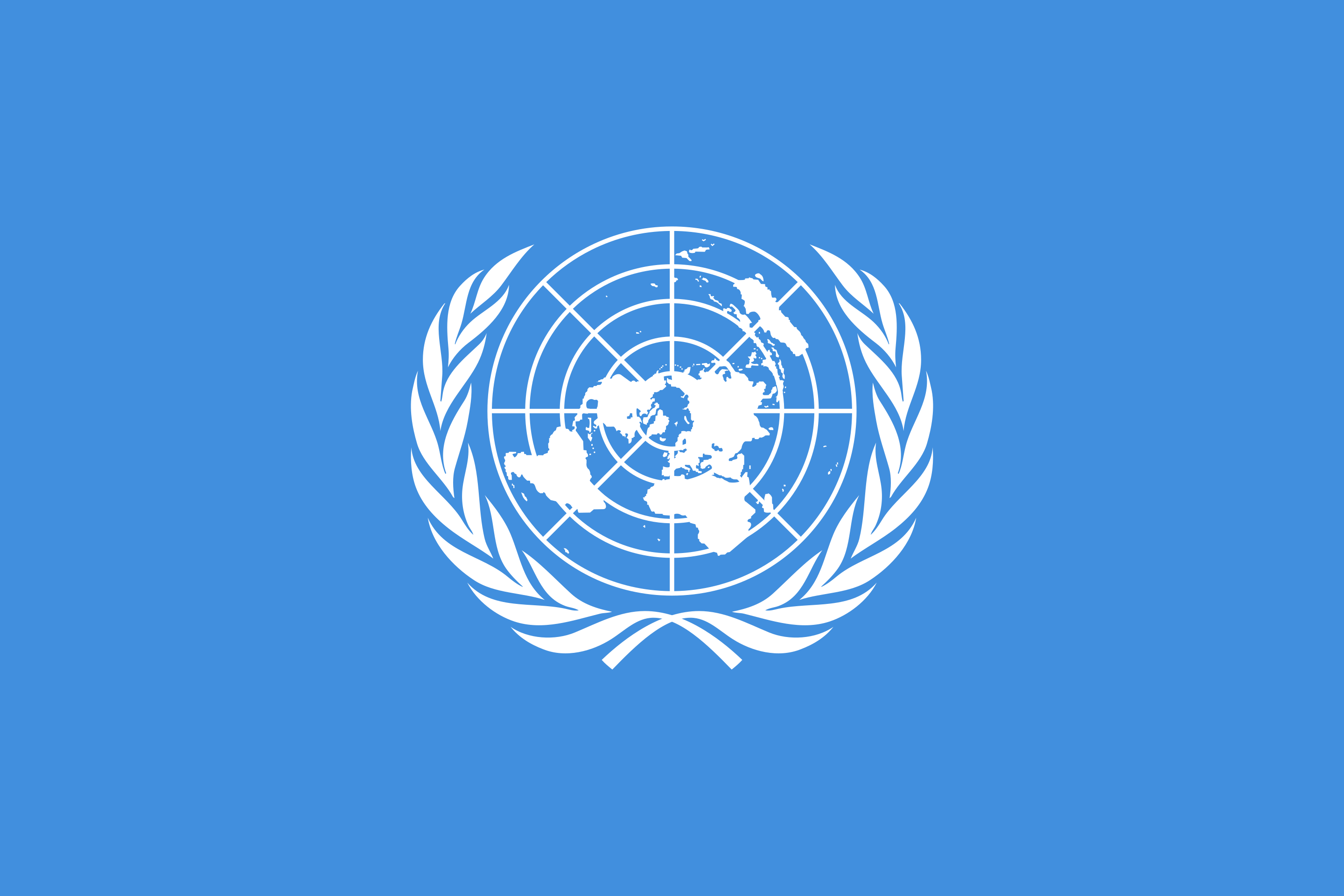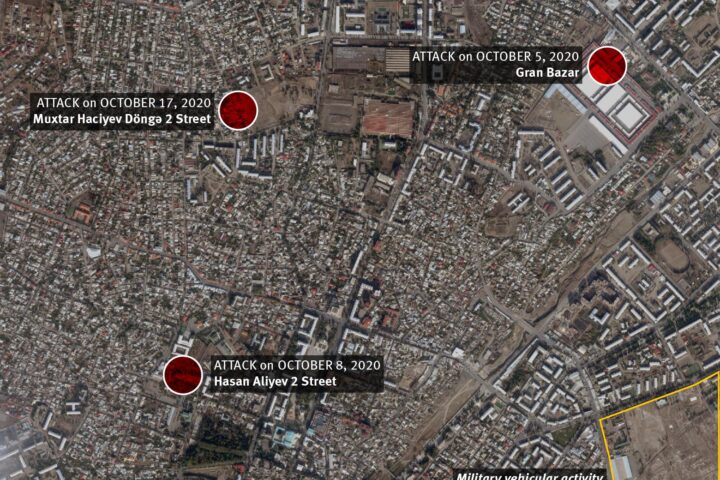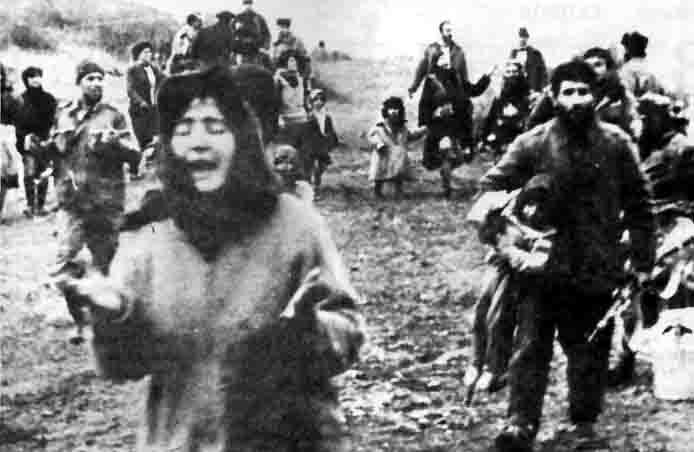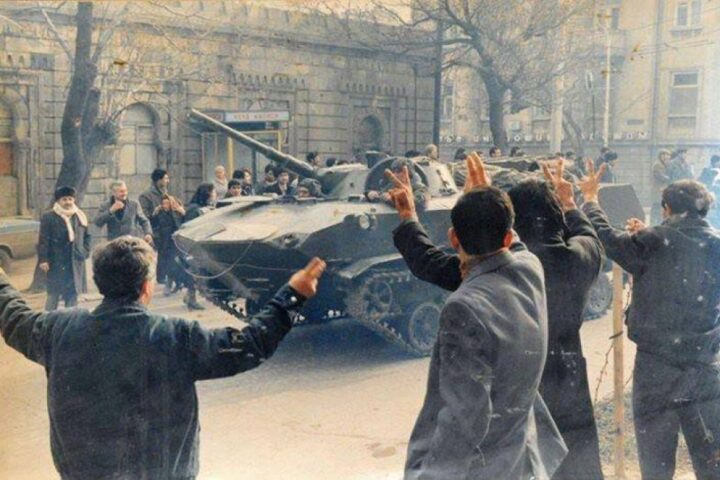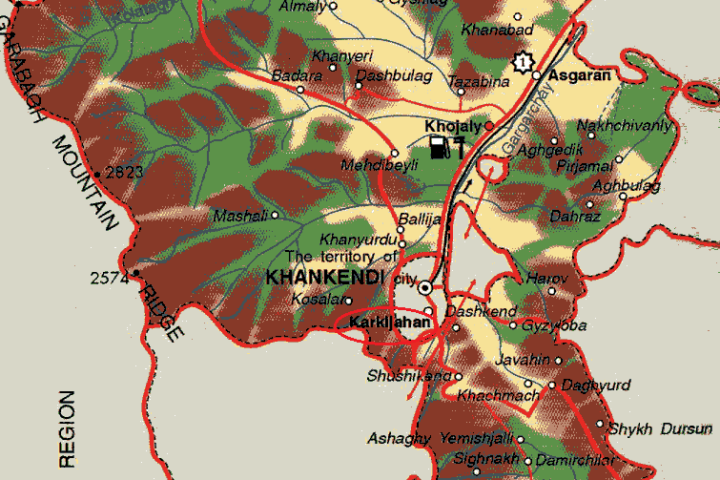Resolution 822: Resolving a dilemma between the undeniable and the unacceptable
Resolution 822, which was the first in series of resolutions adopted by the U.N. Security Council related to the conflict, is significant on several levels. First, the timing of the adoption of the resolution is noteworthy. As is seen from the above-mentioned chronology of the unfolding events on the ground, the Security Council decided to step in only after acquiring evidence indicating the escalation of the fighting into full-fledged combat operations, with involvement of heavy military equipment that caused widespread destruction and the loss of human life.[60]
Secondly, and perhaps more importantly at this stage, it seems that based on the reports coming in from the region and its assessment of the situation, the Security Council had established that the conflict was international in nature and endangered regional peace and security. From this perspective, the wording of the first and subsequent resolutions is of particular importance in the light of the controversy around Armenia’s direct involvement in the conflict and its continuous attempt to camouflage its direction and control over the military operations in the territory of Azerbaijan. Thus, the resolution expressed serious concern at the “deterioration of relations between the Republic of Armenia and the Republic of Azerbaijan,” clearly indicating Armenia’s role in the conflict.[61] More importantly, the document reaffirmed the “respect for sovereignty and territorial integrity of all the states in the region,” and “the inviolability of international borders and the inadmissibility of the use of force for the acquisition of territory.”[62] The reference to these fundamental principles of international law would have been needless unless the Security Council would have established that there was a military confrontation between the neighboring states and that the use of force threatened the territorial integrity of a given state. If the text of this resolution is compared to the one adopted by the Security Council regarding the conflict in Abkhazia in neighboring Georgia, then the applicability of these principles by the Council seems to be case-specific. In that case, in recognition of the fact that the conflict in Georgia was essentially an internal ethnic conflict, the Security Council did not find it appropriate to refer specifically to the principles of the inviolability of international borders and inadmissibility of the use of force for the acquisition of territory.[63]
Clearly, the Security Council reaffirms the inadmissibility of the use of force for the acquisition of territory in the context of interstate conflict. In order to sustain this argument, the text of resolution 242, which was adopted by the Security Council on November 22, 1967, in the wake of the Six-Day War between Israel and Egypt, Jordan, and Syria, provides an example. In that resolution the Council framed its position along the same lines, emphasizing the “inadmissibility of the acquisition of the territory by war.”[64]
While reaffirming this important principle, the Security Council was guided by one of the core principles of international law enshrined in Article 2 (4) of the U.N. Charter, which declares that “all Members shall refrain in their international relations from the threat or use of force against the territorial integrity or political independence of any state […]”. The prohibition of the threat or use of force is one of the consequential principles generated by the fundamental norm of territorial integrity of states, and is meant to protect the international boundaries of independent states.[65] The principle of non-use of force enshrined in a number of international instruments of both international and regional nature[66] is not only a rule of customary international law (i.e. binding for all states), but is also accepted as a peremptory norm jus cogens.[67] Hence, by making such reference to this fundamental principle of international law, the Security Council made it clear that no territorial acquisition resulting from the use of force shall be recognized as lawful as a result of the military activities.
As resolution 822 indicates, the main preoccupations of the Security Council were to stop the fighting and to prevent further escalation of the conflict. The Council demanded “the immediate cessation of all hostilities and hostile acts with a view to establishing a durable cease-fire […]”. The Council was specifically concerned with the situation in Kelbadjar district of Azerbaijan, which is reflected in both the preamble of the resolution, where the Security Council noted with alarm the “invasion of Kelbadjar district of the Republic of Azerbaijan by local Armenian forces,” and in the first paragraph in which the Council demanded the “immediate withdrawal of all occupying forces from the Kelbadjar district and other recently occupied areas of Azerbaijan.”[68] The Council also requested that the Secretary-General “assess the situation in the region, in particular in the Kelbadjar district of Azerbaijan.”[69]
The resolution shows that the Security Council has unequivocally established that there was an invasion of Kelbadjar district and that there was the occupation of territory of a sovereign state. As far as the term “occupation” is concerned, two aspects are noteworthy. First, according to Article 42 of the Regulations annexed to Hague Convention IV, Respecting the Laws and Customs of War on Land (1907) (hereinafter as the “Hague Regulations”), the occupation in international law terms is possible only in the context of interstate conflict when at least a part of the territory of a sovereign state is “actually placed under the authority of the hostile army,”[70] i.e. when it is subject to the belligerent occupation by the army of another state. In fact, it is widely accepted that “there can be no occupation in an international law sense of the concept as between contending forces in an internal conflict.”[71]
Second, the fact that the Security Council determined that the territories of Azerbaijan were “occupied,” as defined in the Hague Regulations and the Geneva Convention IV on the Protection of Civilians in Time of War (1949) (hereinafter as the “Geneva Convention IV”), and that “all parties are bound to comply with the principles and rules of international humanitarian law”[72] implies that the rights and obligations of states identified in these international legal instruments apply to this particular conflict.[73]
As far as the determination by the Security Council that the Kelbadjar district of the Republic of Azerbaijan was invaded by “local Armenian forces” is concerned, careful consideration of the terminology used in the resolution reveals one particular contradiction. The word “invasion” in international law terms is primarily applied in the context of international conflict, which can be clearly established from the consensus definition of aggression adopted by the U.N. General Assembly in 1974. The resolution states that the armed aggression against a sovereign state occurs as a result of “the invasion or attack by the armed forces of a State of the territory of another State, or any military occupation, however temporary, resulting from such invasion or attack, or any annexation by the use of force of the territory of another State or part thereof.”[74]
Wood, elaborating on the general rules of interpretation of the Security Council resolutions, correctly noted that “the terms used in [resolutions], to the extent that they are standard, will presumably bear the same meaning in each resolution.”[75] Hence, the attribution of the word “invasion” by the Security Council to the context of interstate conflict can be clearly seen, if we compare this resolution with resolutions adopted in regard of other conflict situations. The most vivid example is arguably resolution 660 of August 2, 1990, and the subsequent resolutions on the armed attack by Iraq on Kuwait, in which the Security Council condemned Iraq’s invasion and occupation of Kuwait.[76]
Furthermore, the fact that the conflict was between Armenia and Azerbaijan was also recognized by the Minsk Group of the CSCE, which in its “Adjusted timetable of urgent steps to implement United Nations Security Council Resolutions 822 (1993) and 853 (1993),” dated September 28, 1993, defined the area of conflict as to include the territories on both sides of the international border between Armenia and Azerbaijan (including the segment of the international border between Armenia and the Nakhichevan province of Azerbaijan, which is hundreds of kilometers away from the Nagorny Karabakh region).[77]
On the one hand, the wording of the resolution suggests that the Security Council was aware of the involvement of more than just local ethnic forces in the conflict. On the other hand, although the resolution attributes the invasion of Kelbadjar district to “local Armenian forces,” it omits the fact that the district was also attacked from the territory of Armenia.[78] This is in clear dissonance with the terms used in other paragraphs of the resolution, let alone the facts on the ground, which, as was mentioned above, were confirmed also by the independent foreign news reports.
The source of this obvious inconsistency can be found in the practice of adoption of the Security Council resolutions and the attitudes of several permanent members of the Security Council towards this particular conflict. Since no on-the-record debates were conducted in the Security Council preceding the adoption of the first and the subsequent resolutions, for the purpose of establishing the positions of the members of the Council, I have looked through the publicly available verbatim records of the proceedings of the meeting of the Security Council after the vote.
Although the rules of the Security Council require that at least nine of the fifteen members of the Council must vote affirmatively (including five concurring votes of the permanent members) for an action, in practice, due to this voting procedure, the decisions are dominated by the subgroup of two, three, or all five permanent members holding “veto” power.[79] This partially explains the widely held belief that on many occasions the resolutions of the Security Council are watered down in an effort to forge a unanimity that will satisfy the interests of the permanent members of the Council. From this perspective, the last thing a country involved in an armed conflict dealt with by the Security Council would want is to have permanent members of the Council to have an interest in the matter. Yet the conflict between Armenia and Azerbaijan is a case in point.[80] The attitude of at least three of the five permanent members (Russia, The United States, and France)[81] towards the conflict between Armenia and Azerbaijan had a decisive influence on shaping the attitude of the Security Council towards the conflict as was reflected in this and subsequent resolutions.[82]
My analysis of the verbatim records of the Security Council’s 3205th meeting, during which the draft resolution was discussed and subsequently passed, allows concluding that the proposal to add the word “local” before the phrase “Armenian forces” had a specific purpose behind it, rather than reflected the general knowledge of the factual situation on the ground, which was widely discussed in the couloirs of the United Nations during the off-the-record consultations among the members of the Security Council. Interestingly, the representative of the Russian Federation, Mr. Vorontsov, who apparently was one of the principal sponsors of the incorporation of the word “local” into the draft resolution,[83] in his statement after the voting on the resolution informed the Security Council that in the light of the escalation of the conflict the President of the Russian Federation Yeltsin “appealed to the Presidents of Armenia and Azerbaijan for an immediate halt to all hostilities […]”.[84] The French representative, Mr. Merimee, in his statement on behalf of the delegation of France did not hide his satisfaction that the resolution “strike[s] a reasonable balance between acknowledging that the tension exists between Armenia and Azerbaijan and recognizing the localized nature of the fighting.”[85] It is noteworthy that both the Russian and the French Presidents in their joint statement on the conflict dated March 16, 1993, emphasized that “the non-use of force for political purposes and the peaceful settlement of disputes must remain the fundamental principles guiding the conduct of democratic States,” recognizing implicitly that the conflict is of interstate character.[86]
It is possible that with this “jeu de mots” the intention was to fence off Armenia from any legal responsibilities under international law,[87] and to prevent the issue of an “enforcement action” under Chapter VII to be brought to the agenda of the Security Council in the future had it not complied with the provisions of this resolution. The comparison of the assessment of the situation contained in the report drafted by the fact-finding mission and submitted to the Security Council by the Secretary-General two weeks before the voting with the final wording of the adopted resolution supports this supposition. The report in question in its assessment of the situation on the ground had clearly established that “the intensification of fighting in and around the Nagorny Karabakh, especially the recent attack against the Kelbadjar and Fizuli districts of Azerbaijan, poses a serious threat to the maintenance of international peace and security in the entire Transcaucasus region.”[88] However, for some reason the Security Council chose to disregard the assessment of the Secretary-General, which was essentially based on the fact-finding mission visiting the conflict zone and, instead, pointed out in its first and subsequent resolutions that the situation “endangers peace and security in the region.”[89]
The determination of the existence of a threat to international peace and security and identifying its seriousness is the first step the Security Council takes before deciding on action. Although the difference in practical terms between the existence of a situation posing a “threat” or “endangering” international peace and security is unclear,[90] in the U.N. Charter terms there is a difference in the meaning, which entails different implications. According to Article 39 of the Charter, the Security Council has to determine that there is a threat to the peace, breach of the peace or act of aggression and to identify how serious it is before recommending measures to maintain or restore international peace and security under Chapter VII. On the other hand, the phrase “endangering the maintenance of international peace and security” is referred to in Chapter VI, which does not entail immediate enforcement actions by the Security Council.[91] It can be argued that by avoiding reference to the existence of a threat, the drafters of the resolutions intended to prevent any action under Chapter VII. This partially explains why there were no on-the-record public deliberations on the matter in the Security Council’s chamber. Instead, perhaps in an effort to avoid scrutiny by the U.N. Member States of the decisions, which were to be taken in this delicate conflict situation, the Security Council followed the pattern established during the early 1990s to work out the texts of resolutions in its closed consultation room, meeting in the normal chamber only to vote on the agreed upon resolutions.[92]
The unwillingness of the several permanent members of the Security Council to explicitly mention Armenia’s role in the escalation of this conflict was already brought up as a possible reason for the cautious approach prevailing in the Council. However, it should be mentioned that the resolutions towards the Armenia-Azerbaijan conflict were adopted in 1993, i.e. in the early years after the end of the Cold War. The primary consequence of the decades of impasse in the Security Council during the Cold War period was that the reluctance to assess conflict situations in heavy terms and admitting the existence of a threat to international peace and security in the sense contemplated in Article 39 of the U.N. Charter was still there. This self-restraint was to a large extent necessary to preserve the strategic stability in the world through avoiding overt involvement by the major powers in regional conflicts that could trigger a larger East-West confrontation. Interestingly, with the end of the bloc confrontation, the practice of the Security Council has gradually changed, which was manifested in more resolutions under Chapter VII adopted on matters where the existence of a threat to international peace and security was not explicitly obvious.[93] The factors identified above are not contradictory, but rather reinforce each other and indicate the impact of the institutional constrains of the Security Council on its daily practice.
Furthermore, the statements by other members of the Security Council in the aftermath of the voting on the first resolution show that the views held by the French and several other permanent members were not shared in the Council. For example, the representative of Djibouti, Mr. Olhaye, was more explicit than others and did not hide his disappointment with the attitude of several permanent members stating that “we all know only too well that the truth is that this is a conflict between Armenia and Azerbaijan,” and expressing hope that in the near future the Security Council will be in a position “to call a spade a spade.”[94]
The representative of the United Kingdom, Mr. Richardson, also did not seem to have any delusions as to the root causes of the conflict, unequivocally stating that “the only realistic solution, given the United Nations and CSCE principles, is for continued Azerbaijani sovereignty over Nagorny Karabakh, with real autonomy for the local Armenian population.”[95] It is noteworthy that in his statement Mr. Richardson elaborated on the reasons why the Security Council decided to act at this moment and time. Speaking about the value of the resolution, he underlined that “it includes the essential elements of a draft statement [by the senior officials of the CSCE] which could not be agreed upon at [the] Prague [meeting] because of the opposition of one party.”[96]
The representative of Hungary, Mr. Erdos, also pointed to the international nature of the conflict, stating that “the resolution reaffirms that the United Nations will not accept a policy of faits accomplis, threats to regional stability, the use of force for the acquisition of territory, and the violation of international borders.”[97] Likewise, the representative of Venezuela, Mr. Arria, reminded the Republic of Armenia and the Republic of Azerbaijan that they assumed obligations by signing the Charter of the United Nations, in particular showing “absolute respect for one another’s independence and territorial integrity and [renouncing] the use of force as a way of solving dispute.”[98]
The President of the Security Council, Mr. Marker, in his capacity as the representative of Pakistan, expressed the belief that the adopted resolution “would lead to an expeditious withdrawal of all Armenian forces from the territory of Azerbaijan Republic,” and called upon the “concerned states to respect scrupulously the sovereignty and territorial integrity of all the states of the region,” and “to respect the inviolability of international borders of all States […]”.[99]
Having recreated the overall atmosphere that prevailed in the Security Council on the eve and during the adoption of the first resolution, it is possible that the majority, if not all the members of the Security Council, did not suffer from a lack of information and had established the factual situation on the ground. Under these circumstances, the attribution of the invasion of Kelbadjar district to “local Armenian forces,” while keeping all the elements pointing implicitly to the international nature of the conflict, was the result of an inevitable compromise forged among the members of the Security Council. The wording of the resolution reflected the effort of the members of the Council to solve a dilemma of reconciling the need to fulfill their obligations under the U.N. Charter and urgently address the issue impartially, taking into consideration the irrefutable evidence contained in the incoming reports from the conflict zone and, at the same time, safeguarding the interests of several of the Council’s permanent members, which in this case seemed to be avoiding direct reference to Armenia as perpetrator of the invasion and occupation of the territories of another sovereign State with all the consequences which this could entail.
